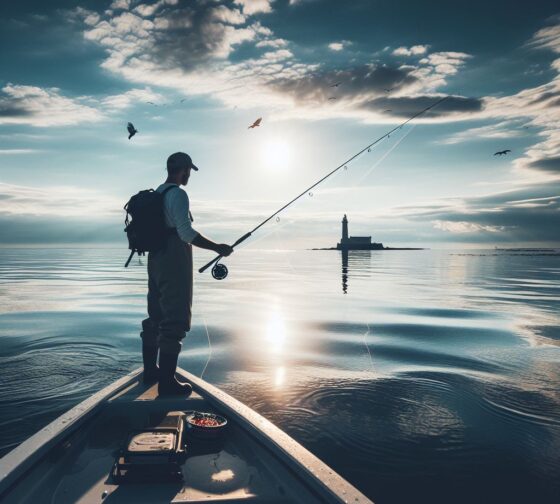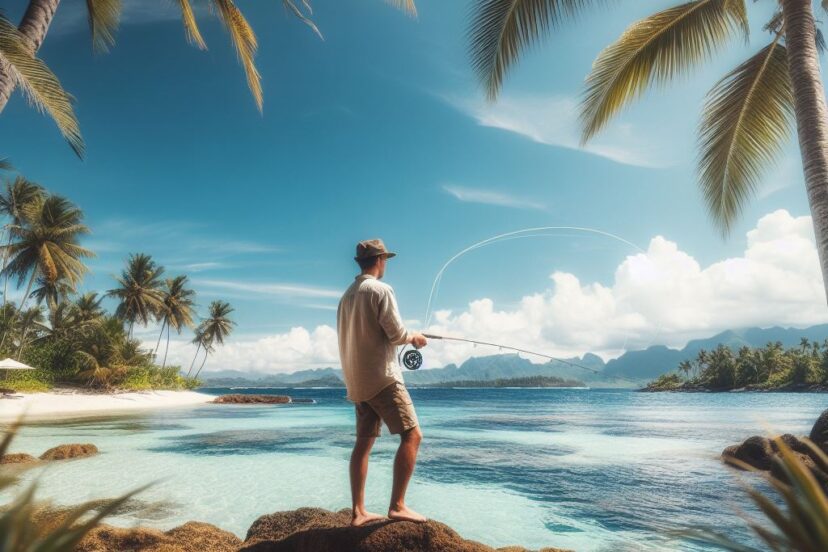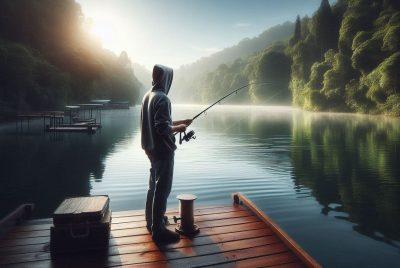Saltwater Fly Fishing: Mastering the Coastal Pursuit
*We may earn a commission for purchases made using our links. Please see our disclosure to learn more.
Saltwater Fly Fishing: An Immersive Journey into Nature’s Realm
Imagine standing knee-deep in crystal-clear waters, waves rhythmically breaking against your legs as you cast a fly line, hoping to entice a trophy fish. This is the essence of saltwater fly fishing—an enthralling fusion of skill, patience, and nature’s unpredictability. Unlike its freshwater counterpart, saltwater fly fishing presents anglers with unique challenges and an array of powerful, adrenaline-pumping game fish.
As an ardent enthusiast of angling, my foray into the mesmerizing world of saltwater fly fishing has been nothing short of exhilarating. It’s more than merely catching fish; it’s about understanding the tides, mastering casting techniques, and connecting with the dynamic marine environment. Allow me to delve deeper into the essentials, techniques, and profound reasons why saltwater fly fishing stands as an unparalleled experience.
Gear Essentials for Saltwater Fly Fishing
Equipping oneself with the right gear forms the cornerstone of a successful fly fishing expedition. A robust fly rod that can handle the rigors of coastal conditions, a purpose-built reel, and a specialized fly line tailored for saltwater use are essential components. Additionally, having a diverse selection of flies that mimic the prey of various species is crucial for enticing fish in different environments.
In the world of fly fishing, the leader and tippet play pivotal roles in ensuring a secure connection between the fly and the fish. The leader’s strength and material composition must be compatible with the targeted species and prevailing conditions, offering the necessary stealth and presentation.
Choosing the Right Location for Saltwater Fly Fishing
The allure of saltwater fly fishing lies not just in the pursuit of fish but also in the exploration of diverse coastal ecosystems. Selecting the perfect fishing spot involves considering a myriad of factors: tidal movements, water depths, topography, and the presence of baitfish or other marine life. Coastal flats, estuaries, mangrove shorelines, and deeper offshore waters offer unique opportunities and challenges for anglers seeking different species.
Some of the most coveted saltwater fly fishing destinations, such as the flats of the Florida Keys, the remote expanses of the Seychelles, or the picturesque coastlines of Belize, attract anglers worldwide. These locales not only promise an abundance of fish but also stunning natural landscapes that heighten the overall experience.
Techniques and Strategies for Success

Casting a fly line gracefully across the water surface is an art perfected through practice and patience. Saltwater fly casting demands precision, especially when confronted with strong winds or complex tidal currents. Adopting different casting techniques and understanding the nuances of double hauls, false casts, and presentation can significantly increase the chances of success.
Beyond casting, retrieving the fly in a manner that imitates the natural movement of prey is crucial. Varying retrieval speeds, pauses, and movements can trigger strikes from discerning saltwater species like bonefish, tarpon, or permit.
Understanding the influence of tides and currents on fish behavior is another key aspect. Learning how these factors affect feeding patterns and movement can aid in strategic planning and positioning, increasing the likelihood of hooking a prized catch.
Understanding Saltwater Fish Species
Each saltwater species presents a unique challenge and requires a tailored approach. From the high-flying acrobatics of tarpon to the stealthy and elusive nature of bonefish, comprehending their habits and preferred habitats is fundamental.
Species identification and knowledge of their feeding preferences allow anglers to select the appropriate flies and fishing techniques. Observing their behavior, feeding patterns, and reactions to different environmental conditions enhances the angler’s ability to target specific species effectively.
Environmental Considerations
Preserving the delicate balance of marine ecosystems is crucial for the sustainability of saltwater fly fishing and the oceans at large. As stewards of the environment, anglers play a significant role in conservation efforts.
Responsible angling practices, such as practicing catch-and-release, minimizing impact on habitats, and adhering to fishing regulations, are imperative. Supporting conservation organizations dedicated to marine protection and participating in beach clean-ups or habitat restoration projects further contribute to the conservation of these precious environments.
Safety Measures while Saltwater Fly Fishing
Nature’s unpredictability demands that anglers prioritize safety. The dynamic nature of coastal environments can present challenges, from sudden weather changes to swift currents.
Being well-prepared with appropriate safety gear, such as life jackets, sunscreen, protective clothing, and communication devices, ensures readiness for any unforeseen circumstances. Keeping an eye on weather forecasts and being aware of local conditions before venturing into the waters is essential for a safe and enjoyable fishing experience.
Benefits and Challenges of Saltwater Fly Fishing

The rewards of saltwater fly fishing extend far beyond the catch itself. The serenity of the ocean, the adrenaline rush of battling a powerful fish, and the continuous quest for improvement create a fulfilling experience.
However, the sport is not without its challenges. It demands dedication, patience, and adaptability. Weather conditions, elusive fish, and ever-changing environments require anglers to persistently hone their skills and embrace the unpredictability inherent in the pursuit.
Conclusion
Saltwater fly fishing is a captivating journey—one that celebrates the harmony between man and nature. It’s about embracing the elements, learning from the sea, and respecting the delicate ecosystems that harbor the sought-after species. Whether you’re a novice or a seasoned angler, the adventure into this realm promises endless discoveries and unforgettable moments.
Unique FAQs:
- Q: What are some versatile flies suitable for beginners in saltwater fly fishing?
- A: For beginners, versatile flies like Clouser Minnows, Deceiver patterns, and Crazy Charlies are recommended. These imitate various baitfish and prove effective for multiple species.
- Q: How critical is the selection of fly line in saltwater fly fishing?
- A: Fly line selection significantly affects casting distance, accuracy, and presentation. Specialized saltwater fly lines are designed to withstand the unique demands of coastal environments, enhancing the angler’s performance.
- Q: Are there specific seasons that offer better opportunities for saltwater fly fishing?
- A: Seasons can influence fish behavior, but fly fishing can be pursued year-round. Factors such as water temperature, migrations, and baitfish movements play significant roles in seasonal success.
- Q: Is starting saltwater fly fishing expensive?
- A: Initially, the gear investment might seem high, but there are affordable options available. The joy and experiences gained make it a worthwhile investment for enthusiasts.
- Q: How can anglers contribute to marine conservation while enjoying fly fishing?
- A: Anglers can contribute by practicing catch-and-release, using eco-friendly gear, adhering to fishing regulations, and supporting organizations dedicated to marine conservation.




